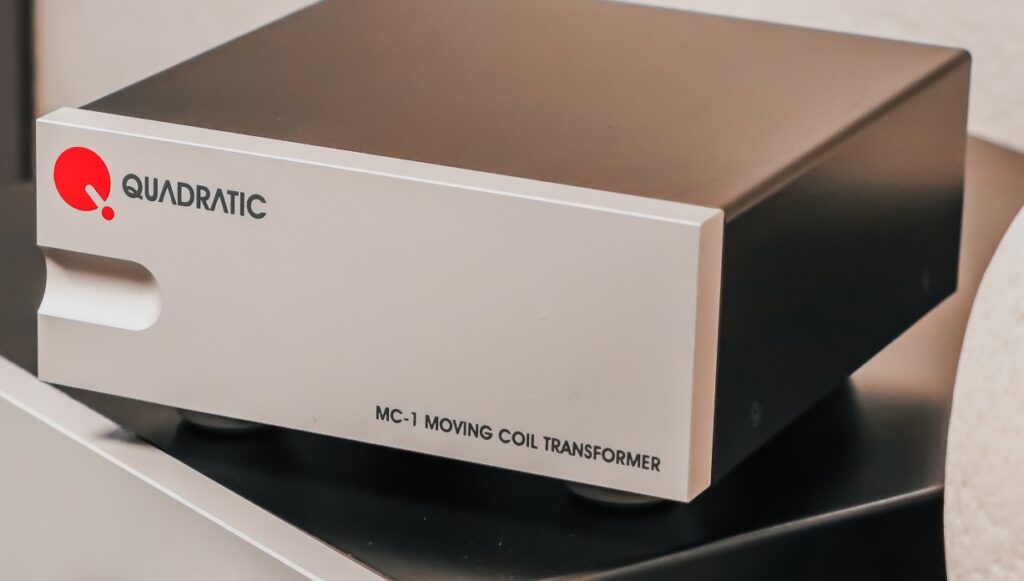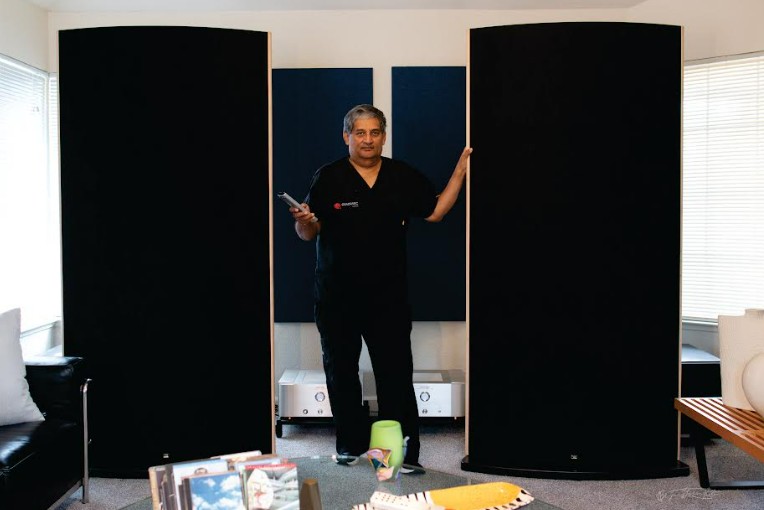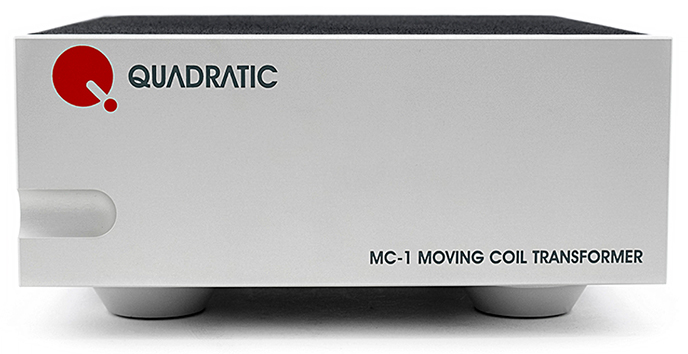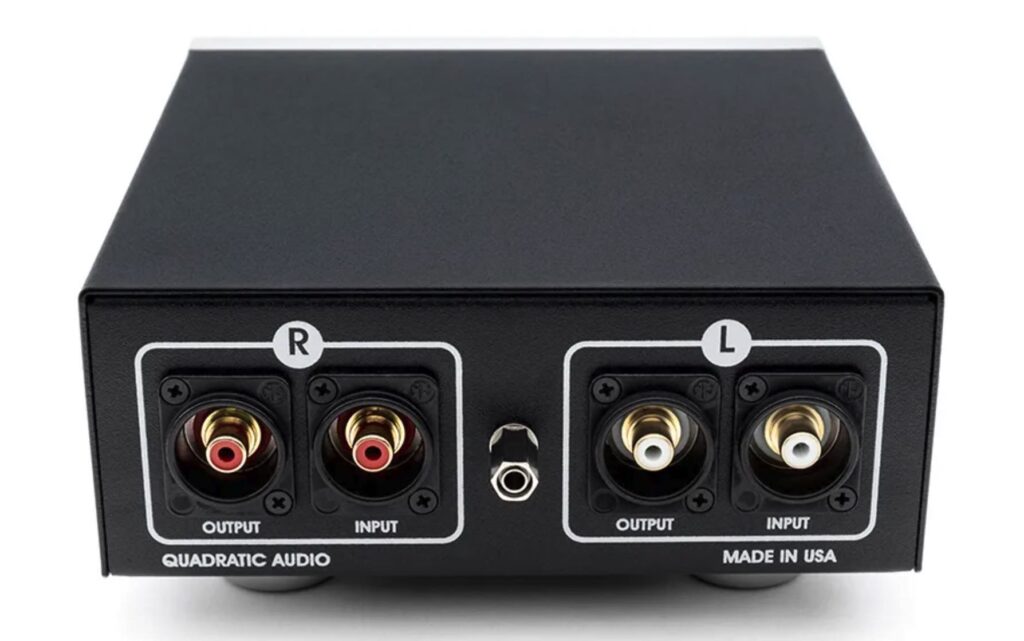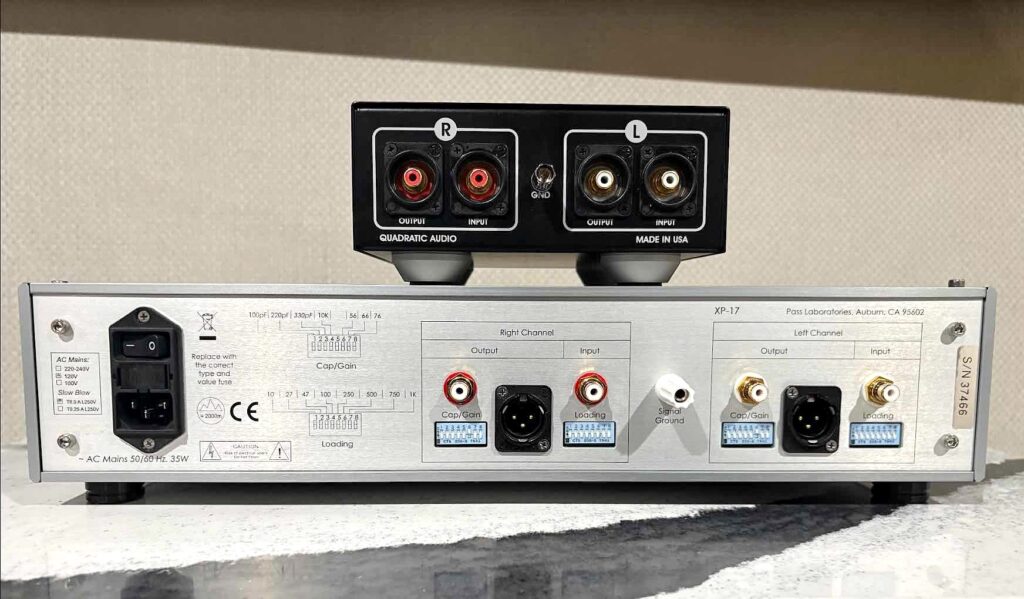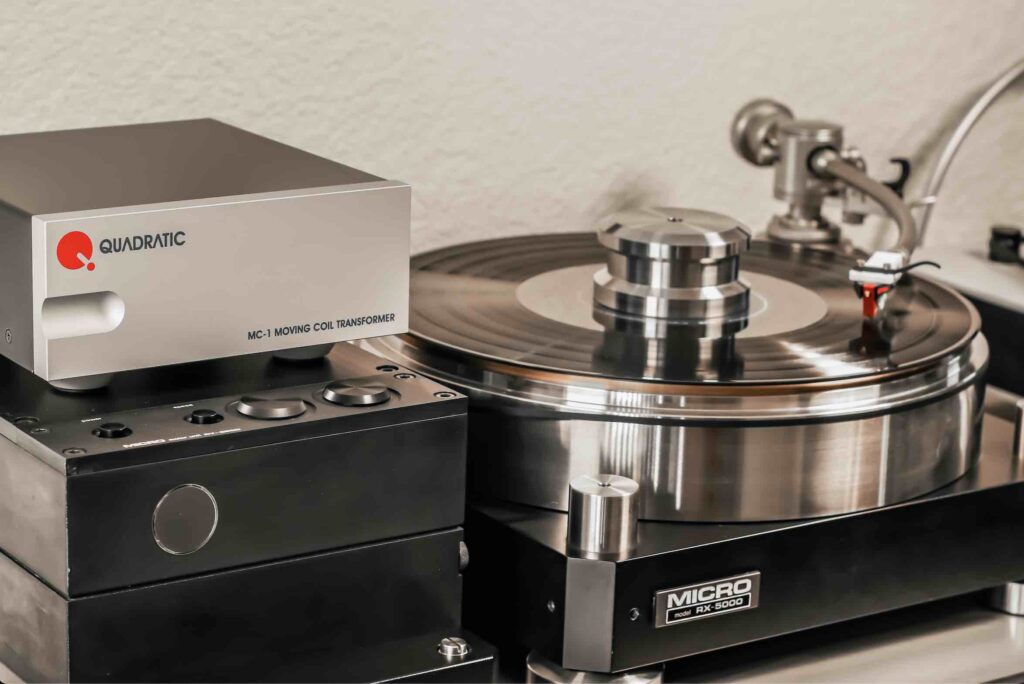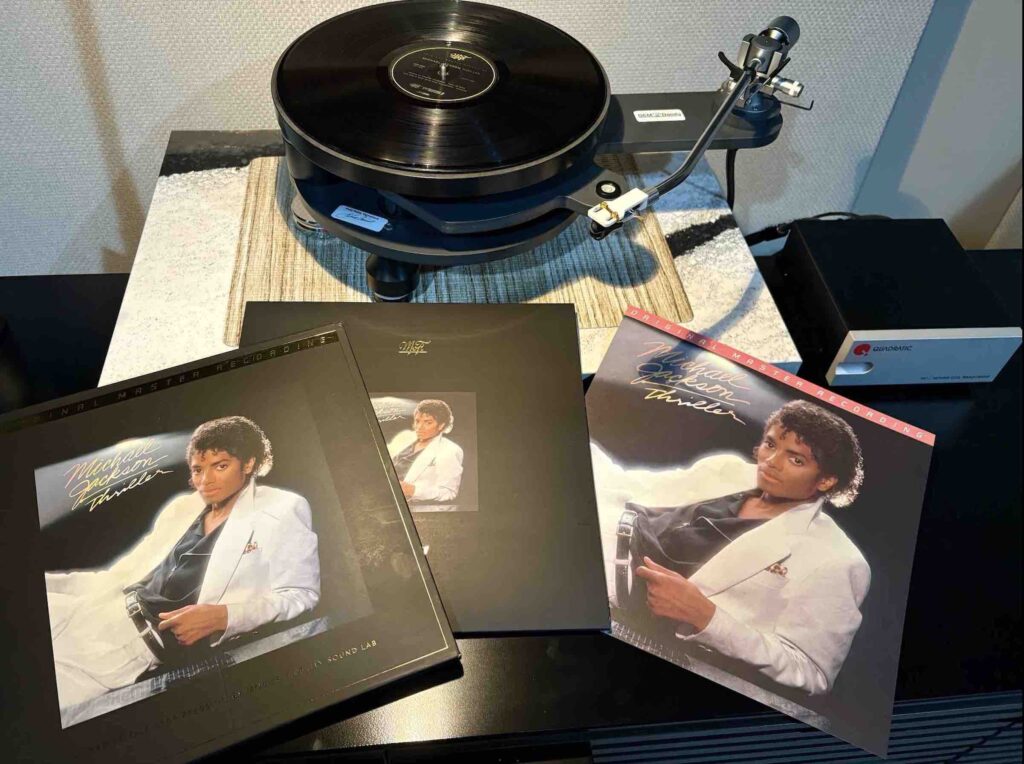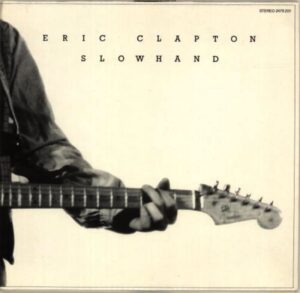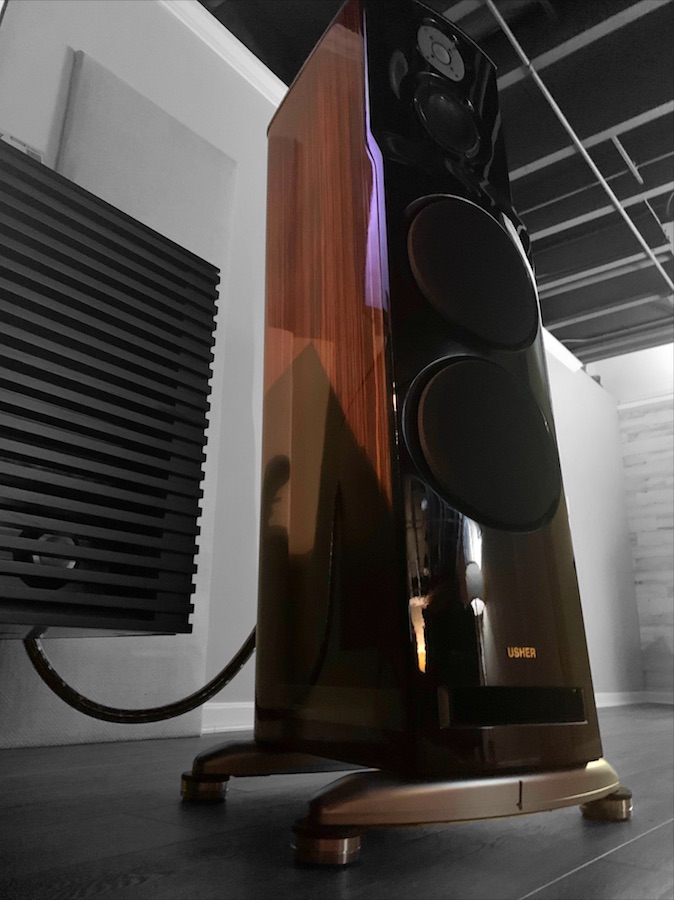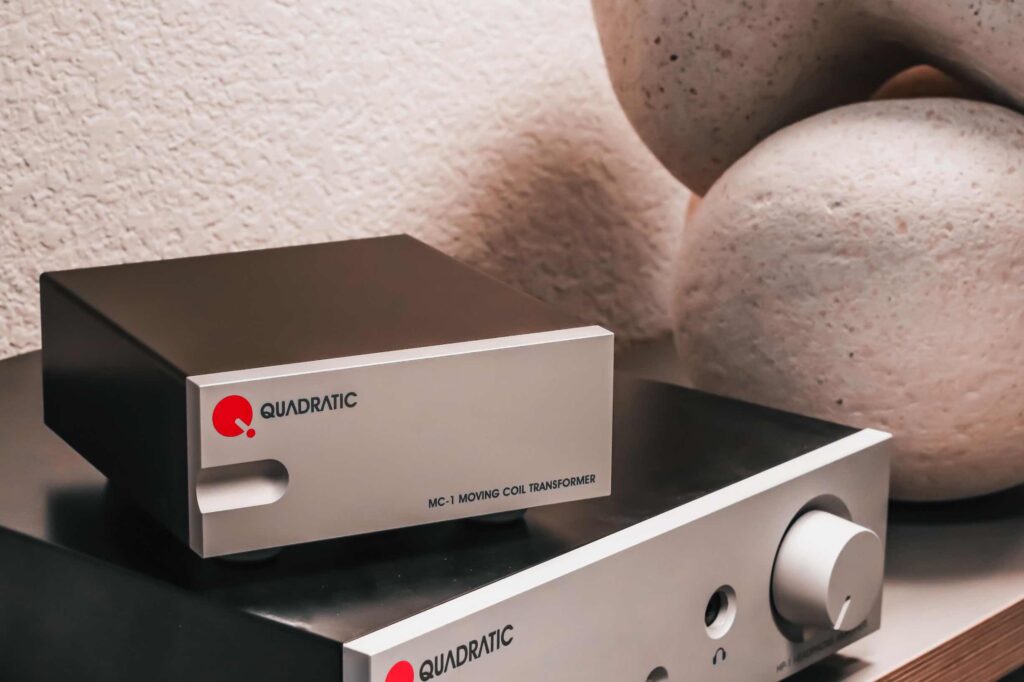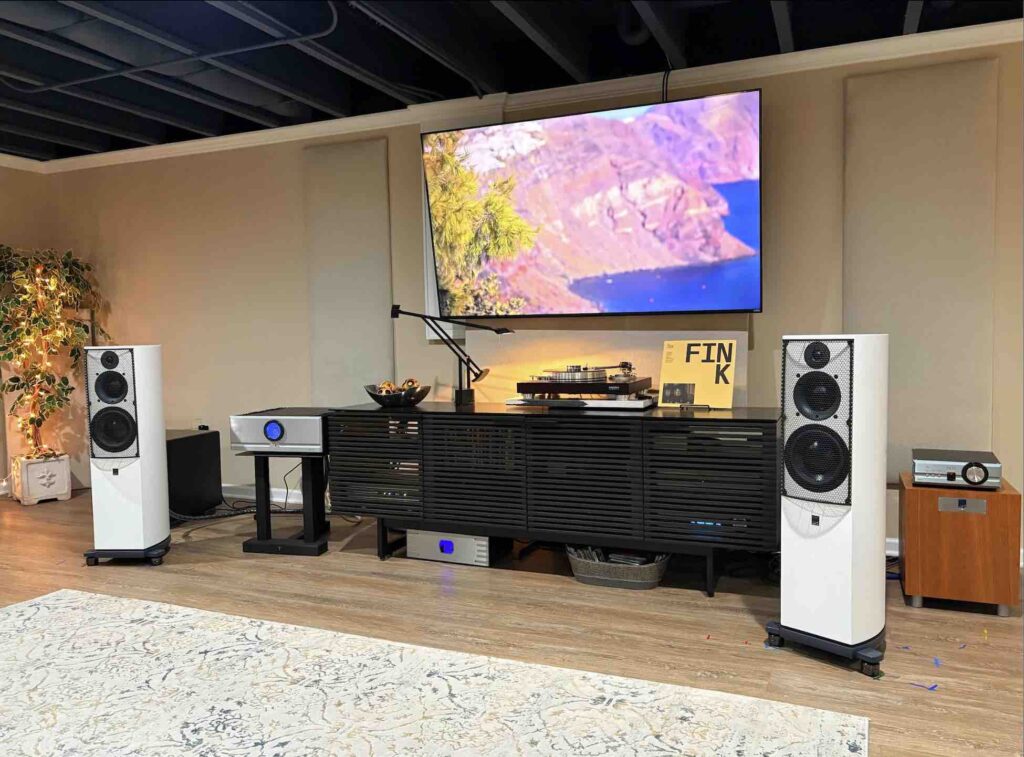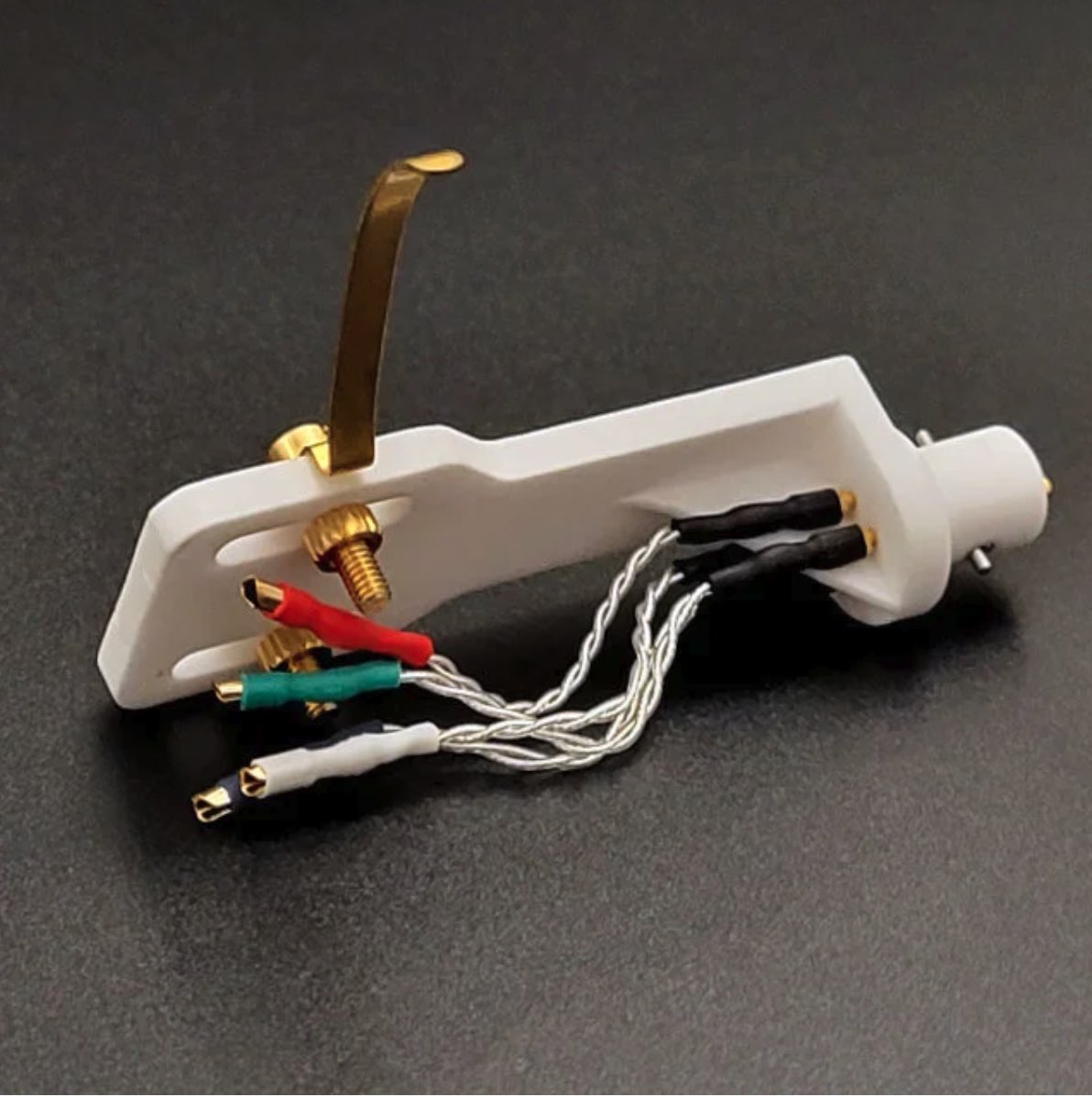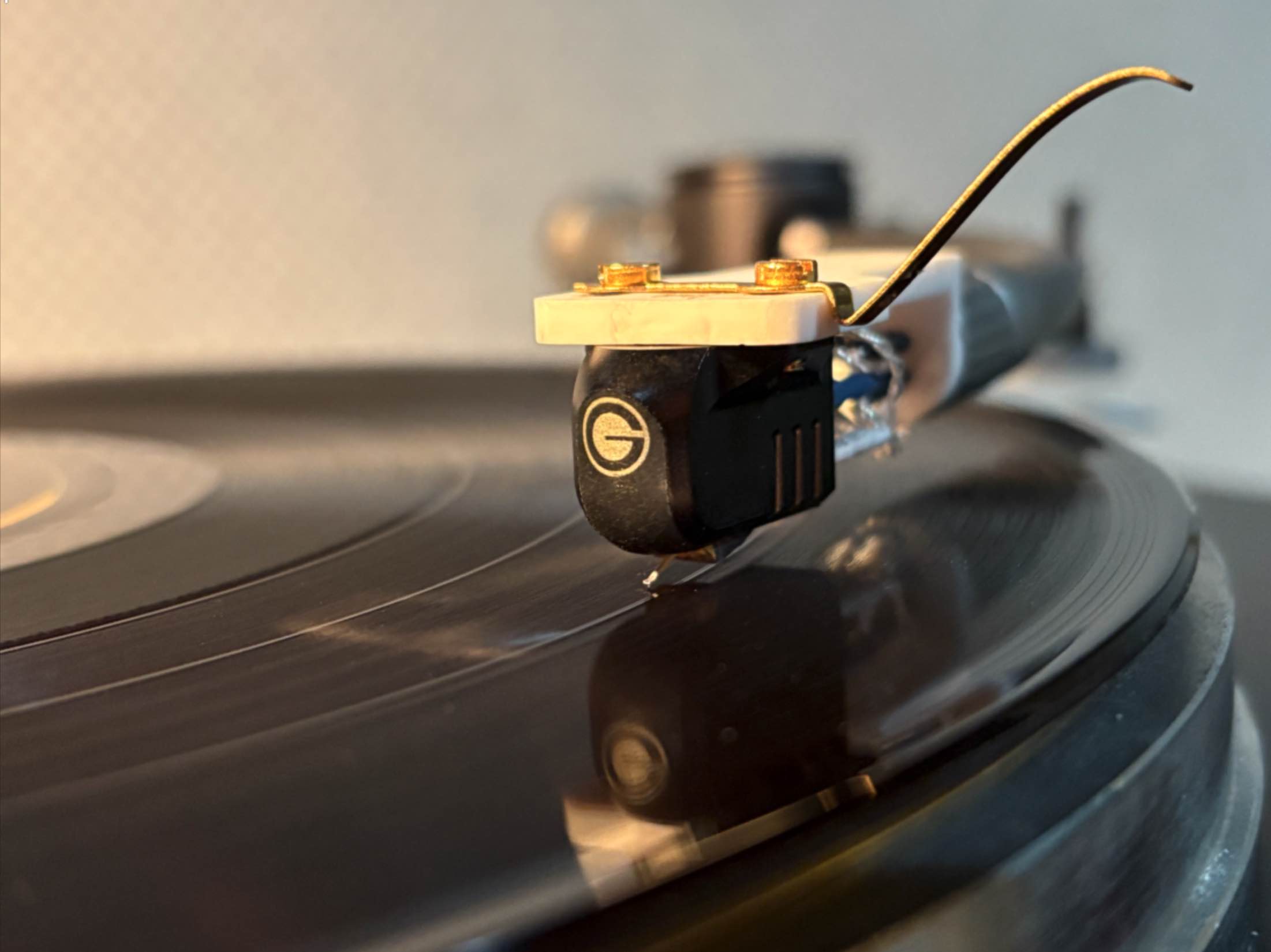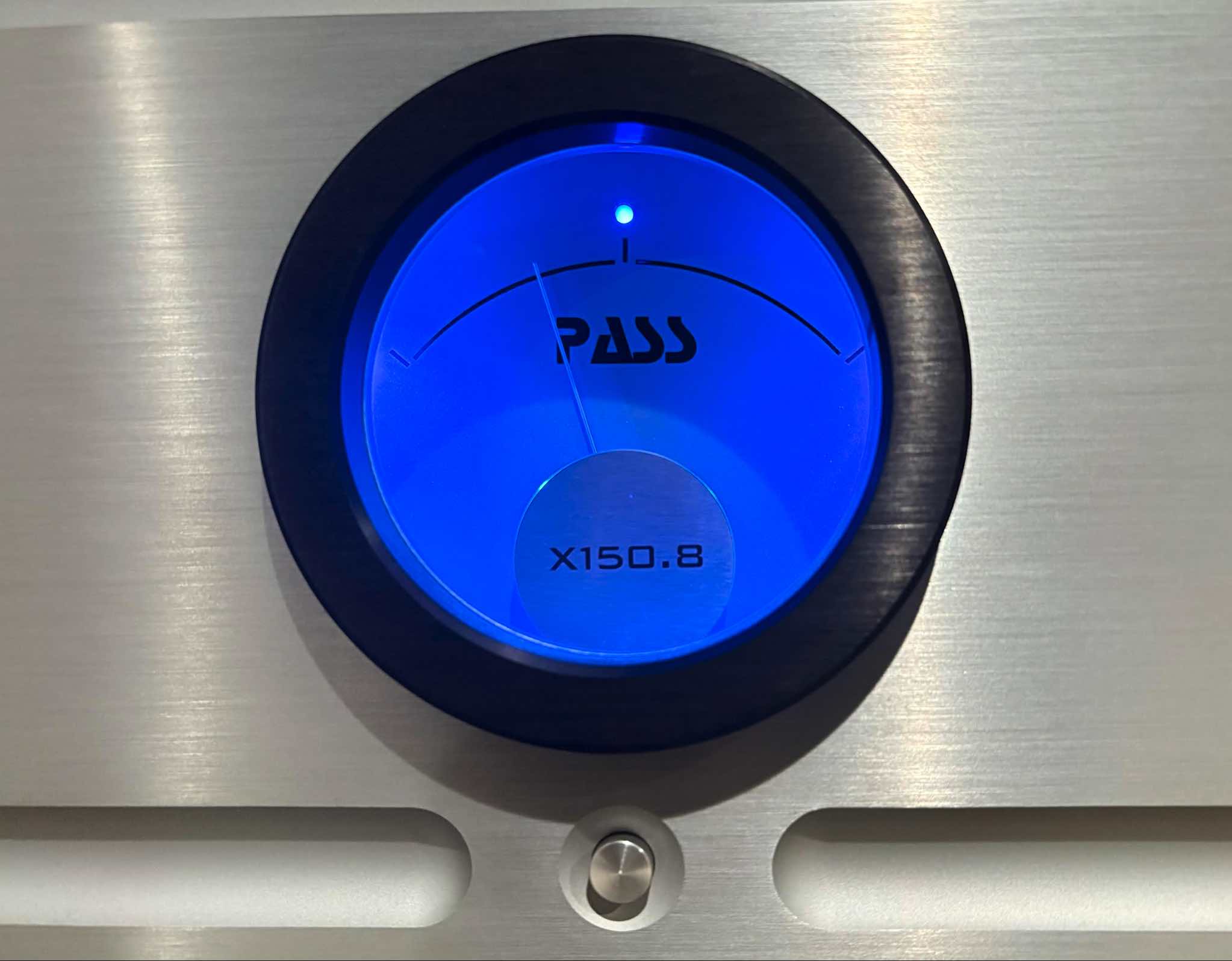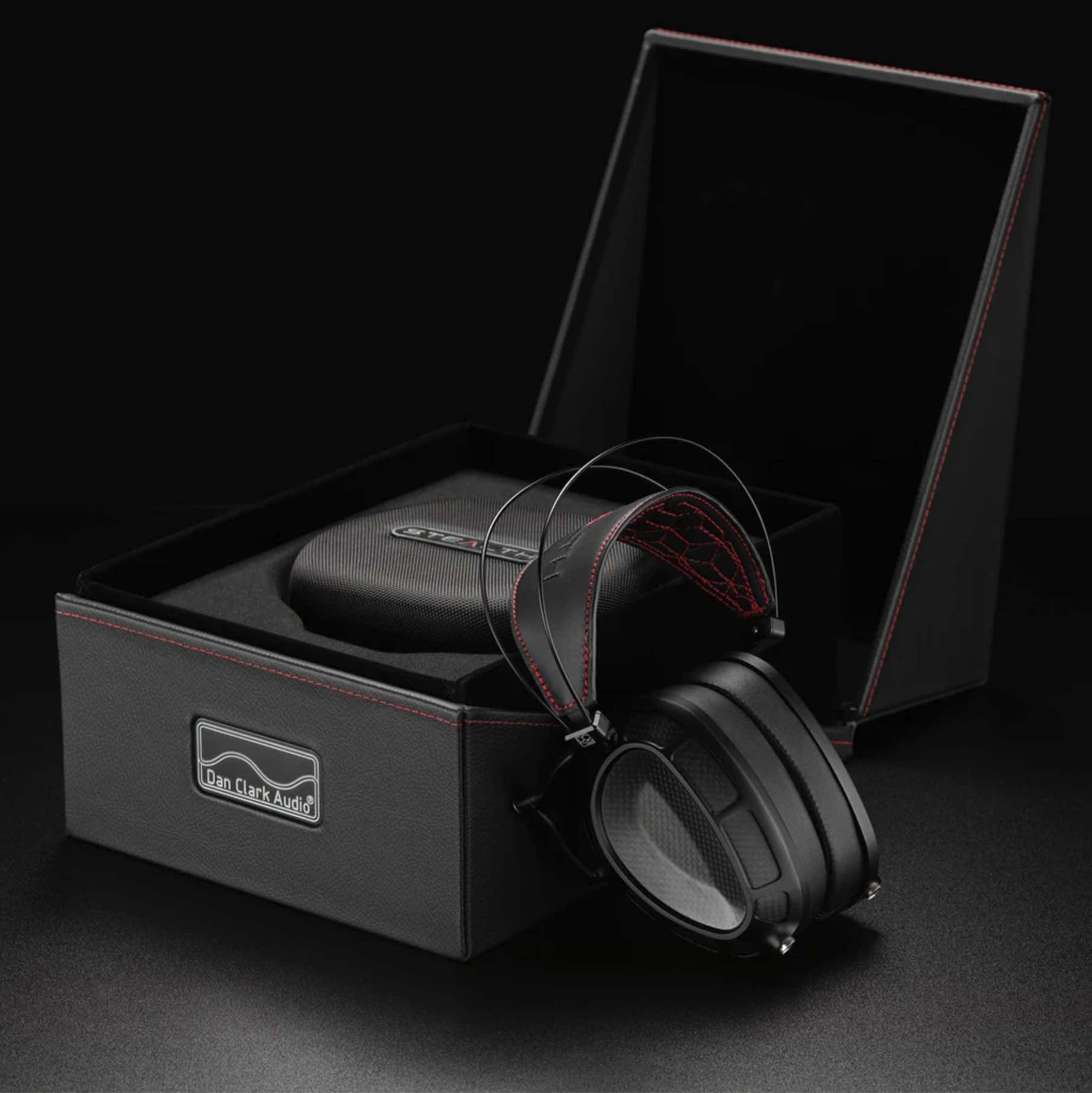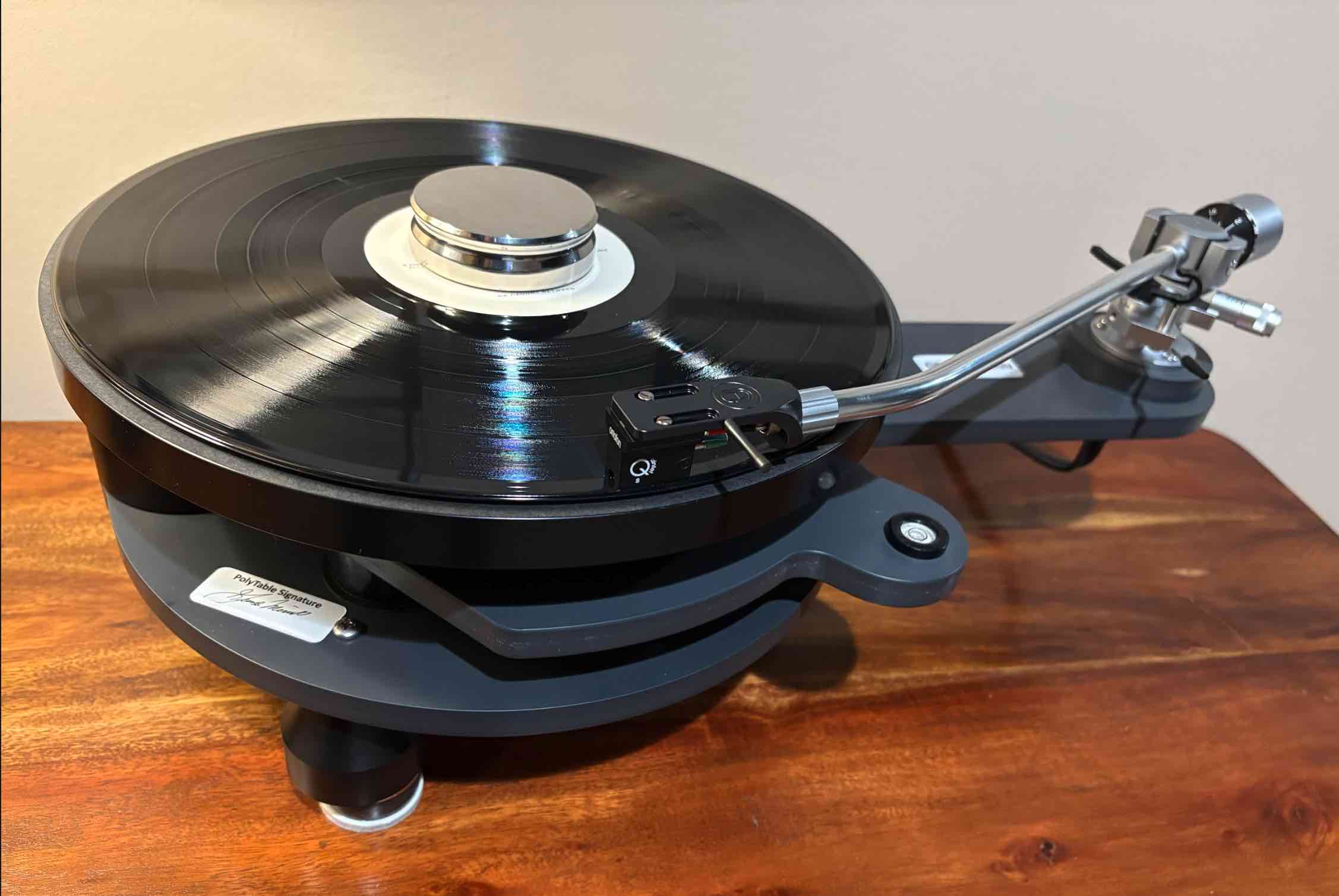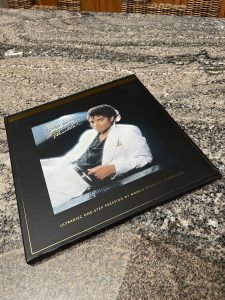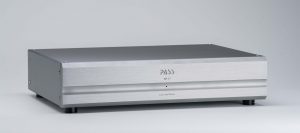Photo by Bryant Larsen
The Quadratic Audio MC-1 was influenced by a triumphant tradition that rose from the Great War's ashes to avant-garde and worldwide influence that continues today.
It was 1919 in post-World War I Germany when, under Berlin architect Walter Gropius' leadership, the Weimar School of Applied Arts merged with the Academy of Fine Arts to form the Bauhaus State School. (www.getty.edu) The Bauhaus upended the traditional fine arts education model by elevating architecture, design, textiles, and theater to the same level as sculpture and painting. Moreover, it gave birth to the Bauhaus movement that lasted from 1919 to 1933 with a central goal to merge all artistic mediums into a unified approach of combining an individual's artistry with mass production and function.
"The Bauhaus design style is straightforward; it believes in simplicity, clarity of design, optimum functionality, abstract shapes, the use of primary colors, and balanced visual composition," says architectural journalist Pooja Khanna Tyagi. "Therefore, there was no need for additional ornamentation to make things more beautiful as it was allowed only if it followed function."(www.yankodesign.com)
A practical design approach informed by the mantras "form follows function" and "less is more" was applied to subjects including colors, tea cups, furniture, and architecture, making them both beautiful and accessible. (www.medleyhome.com)
Pressure from conservatives forced the Bauhaus to relocate twice—first to Dauhaus in 1925 and again to Berlin in 1932—before the Nazis closed it for good in 1933.
However, rather than squelching it, the shuttering ignited a worldwide diaspora of the Bauhaus Movement as its students and professors fled Germany to the United States. Mies van der Rohe became Director of the College of Architecture, Planning, and Design at the Illinois Institute of Technology, Joseph Albers became head of the painting program at Black Mountain College (a hotbed for the American avant-garde), László Moholy-Nagy formed what later became Chicago's Institute of Design, and Walter Gropius went on to teach at the Graduate School of Design at Harvard University, proving pivotal in introducing International Style architecture to the Anglosphere and informing the Modernist Movement worldwide.
Image courtesy of https://material360.co
Arguably, the Bauhaus was history's most influential art and design school. Its impact was widespread, with examples including the Tea Infuser by Marianne Brandt, the Senecio painting by Paul Klee (1922), and modernist architect Mies van der Rohe's Barcelona Chair and Chicago Federal Center.
It's What's Inside that Matters
Then, in 2024, while reviewing the magnificent Pass Labs HPA-1 headphone amp, I interviewed its designer, Jam Somasundram, who was a big fan of Bauhaus. Created in 2016, its chassis bore PL's rugged industrial aesthetic, but its internals reflected his excellent voicing and engineering acumen. He was thrilled that, like him, I owned an Artemide Tizio Lamp by Modern industrial design god Richard Sapper (actually, he owned several), and that's when he introduced me to his Quadratic Audio MC-1 Moving Coil Transformer (he left Pass Labs to form Quadratic Audio).
Image courtesy of www.reddit.com
Fast-Tracking Your Vinyl Experience
A turntable's cantilever is the suspension system, and the stylus, the tires of a tiny sports car circling a rugged raceway like Sebring International. Bumping along at a rate of 4186.67 centimeters per second on a 33 ⅓ LP, it keeps the needle on track while reading microscopic information merely atoms thick.
For maximum performance, many vinyl enthusiasts prefer moving coil phono cartridges for the lighter mass of their coils—versus the heavier magnets used in moving magnet cartridges—enabling the stylus to trace a record's grooves more nimbly and accurately to extract more detail and nuance. This is especially true with high frequencies; whereas MM cartridges deliver higher output, making a connection to most audio equipment easier, their higher inductance can flatten the frequency response. (Source: pro-jectusa.com)
Unfortunately, MC cartridges yield a lower output signal, making a step-up transformer desirable for playing music at higher volumes with minimal background noise. And that's where the Quadratic Audio MC-1 Moving Coil Transformer comes into the picture. Using their custom-design step-up transformer manufactured by CineMag, redundant Faraday shielding, and excellent engineering, his MC-1 is a magnificent megaphone for the minute signals of moving coil phono cartridges, adding life and dynamics while suppressing electronic noise, lowering the noise floor, and magnifying the details on a refined sound system—resulting in a stunning aural image.
The MC-1 being tested above and below, Jam with his Sound Labs 745 electrostatic speakers (photos by Bryant Larsen)
Jam Somasundram, President Quadratic Audio
A vinyl lover, electrical engineer, and 40-year veteran in the audio industry, Jam Somasundram gained notoriety for the HPA-1 Headphone Amplifier he designed for Pass Labs (you can read about Jam and his HPA-1 HERE). Serving now as president of Quadratic Audio since January 2021, Jam Somasundram left his position as Director of Engineering at Cary Audio Design in 2013 to join Pass Labs' design team, where vinyl was the sole means of voicing the HPA-1. After serving as a designer at Pass Labs for over eight years, he left to form a collaborative partnership with CineMag, renowned for their audio transformers, in pursuit of creating a superb step-up transformer.
The $4800 Nomos Glas Hutte Autobahn Neomatik 41 Date Sports Gray Watch is one that Somasundram admires and covets for its striking design and superb engineering (photo courtesy of https://nomos-glashuette.com)
The Bewitching Bauhaus Beckons
"When I left Pass Labs, I wanted to explore more of the possibilities of what you could do in other manufactured designs and sonics, " Jam said in a telephone conversation. "With Pass Labs, I had to work within the constraints of what Pass wants for their look and feel. I wanted to do something that would work for me. At least with Quadratic, I'm starting a whole new process of how something looks."
He wanted to scratch that Bauhaus design itch, giving it full expression while flexing some serious engineering muscle.
"Think about it," he enthuses. "All these guys—the Tizio Lamp, the Corbusier Chaise Lounge, the Barcelona Chair, and (Laurence) MacIntosh Furniture—all these guys (who designed them) were great architects, not furniture designers, no architects, first! And it's a different mindset for products that last the test of time. That's what I'm trying to achieve: come up with something that will last the test of time and be valid for years to come.
"For example, if you look at our metal parts, everyone puts real rubber feet on their transformer, and we chose not to," he explains. "Because of design language, we use the same (metal) feet in our transformer and upcoming products. So those feet cost us quite a lot to produce because they're machined and we have to anodize and ceramic-bead-blast them. But the thing is, it adds value to the product. Even though it costs more, it's something that we want the design to last 20 years or more."
I think this is the beginning of a beautiful friendship
"I'm really into transformers as well as the signal transformers or magnetics, as it were," he continues. "We use transformers in some of my designs. So, I partnered up with CineMag, which makes high-end signal-level transformers, and we decided that since they had the manufacturing capabilities, we would work."
Their collaboration resulted in their superbly designed, proprietary step-up transformer exclusively manufactured for Quadratic Audio. It's unavailable for resale at CineMag or elsewhere.
As the manufacturer of Quadratic Audio transformers, CineMag brings a wealth of experience, making moving coil phono cartridge transformers since 1977, with a heritage reaching back to 1944 at Altec Lansing. In an issued statement, they broke down the features and benefits of the MC-1's unique transformer:
- Proprietary mu-metal laminations with extremely high permeability and excellent linearity
at the low signal levels that MC cartridges produce. - Coil manufacture combines craftsmanship and numerically controlled winding. Coil
buildup is numerically controlled for optimum and consistent coil wire placement. Detailed
craftsmanship goes into attaching the wires, accurately placing the layered insulation between
the numerous coils, and incorporating the Faraday shields. - Faraday shielding between the primary and secondary windings with copper foils. The drain
wires are attached to the foils with a micro spot welder for permanent, low profile, air-tight
connections. - Hum-bucking winding topology.
- The above factors give it excellent CMRR (common mode rejection ratio), which makes it
very resistant to hum pickup both from the cables and connections up to the transformer as
well as stray magnetic field pickup from adjacent power transformers (and motors, if any). - The various coils of wire comprising the primary and secondary are engineered for optimal
bandwidth, stage presence, brilliant highs, and strong lows to accurately capture what the
engineers who cut the master vinyl record intended.
"My partner's name is (CineMag's) David Geren," Jam continues. "I've known him since my days at Cary Audio. We approached each other and said, 'Hey, let's come up with something and push the envelope!' So we said, 'Before we get into doing something like headphone amps or electronics, let's see what we can do as far as a moving coil step up,'" which is a pretty tough thing to do–to get a good one, really. (You can read the MC-1 White Paper in Appendix A at the end of this review)
"We worked for about two years, and we came out with the MC-1, which is a moving coil step-up transformer. We tried to make it so it covered most of the ranges, as far as gain goes–that covers most cartridges. And finally, after a bunch of prototypes, we came up with our current design. We've used larger coils and a special annealing process. It took a lot to get it to where it is. And it's all manufactured in the States. We try and predominantly use U.S. vendors whenever possible. And the key was to make it as dual-mono as possible. That means that thing is on a circuit board, where the left and right-hand channels are separated. So that's what we came up with.
"If you have a phono stage, you just attach the moving magnet input or reduce the gain of the moving coil stage and run it at 47k Ohms, and it will work fine. A lot of our customers do that or replace their moving coil stages with our transformer."
A Wunderkind in a Small Package
At 3" (76 mm) H x 6 1/2' (165 mm) W x " x 8" (203 mm) D and 4.2 lbs., the MC-1 boasts a compact, minimalist rectangular chassis set on truncated, conical custom-designed, rubber-padded metal feet with pleasing lines worthy of its Bauhaus roots. Upfront on the upper left corner, it boasts their designerly red Q logo with the word "Quadratic" in a stylized black font while, below, a rounded-off CNC machined half-inch wide trough extends an inch and a half from the left corner a third of the way up, and "MC-1 Moving Coil Transformer" is emblazoned in all caps along the bottom right. At the chassis' rear, left to right, are the right RCA output and inputs, a grounding post, and the left and right RCA outputs and inputs.
Being passive, it doesn't require external power to operate. According to its owner's manual, it is "an electrical device that 'transforms' one voltage to another in proportion to the turns ratio of the 'primary' input side to the 'secondary' output side." Not having active electronics to introduce electrical noise brings the signal amplitude up to a useful level without introducing objectionable noise.
The MC-1 comes preset for high gain, which works great for most contemporary MC cartridges, however, it features internal jumpers that can be re-positioned to alter the impedance ratio and grounding. (MC-1 User's Manual)
For hum and noise mitigation, the MC-1's transformers are encased in Mu-metal cans that block out a lot of stray magnetic fields (greater than -30dB isolation, according to the manual). Moreover, they are made with hum bucking transformers that have superior common mode rejection ratios (CMRR). Additionally, the MC-1 transformers employ internal "floating (neither connected internally to the primary or secondary) Faraday shielding that "ultra-isolates" the primary and secondary sides of the transformer. (Ibid) The MC-1 also has a Ground Lift option that can be engaged or disengaged for optimal hum rejection.
Specifications
- Gain Setting High: +28 dB
- Gain Setting Low: +22 dB
- Frequency Response: 10Hz – 100kHz
Recommended Load: 47k - Dimensions: W 6.5" (165mm), D 8.0"(203mm), H3.0"(76mm)
- Weight: 4.2 lbs. (1.9 kg.)
This Pilgrim's Progress
Our current home had an unfinished basement with the circuit breaker panel on one of its exterior walls that would become the front end of our listening and media room, so I hired an electrician and a carpenter to finish it (you can read about that HERE). Several dedicated A/V lines were installed that produced no noise with digital sources. However, the panel's proximity to electronic components upfront created a slight 60Hz hum that became noticeable when playing vinyl at volumes around 70 dB and above. So much for a black background! Unfortunately, I often enjoyed listening at louder levels, and with vinyl playback, I either played at more moderate levels or simply tolerated this nuisance.
Eventually, my patience dwindled, and I did my homework and spent a lot of online researching and troubleshooting in my listening lab—getting as much separation between power and signal lines as possible, then experimenting with the placement of components and the media cabinet relative to the power panel.
"Why don't you relocate your electronics to a side wall?" several friends asked. After all, removing sizable objects between the loudspeakers made more acoustic sense however, after investing in a $3000 BDI Corridor media console to dress up the front wall, hide messy cables, and please my wife's aesthetic sensibilities in our shared space, that just wasn't going to happen.
That's the rear view of the Pass Labs XP-17 Phonostage, with its Cap/Gain and Loading switches set for the use of the MC-1 (which is seated on top)
Reading fervently through the Pass Labs XP-17 phono stage manual, I called their headquarters, as per their direction, keeping a record of capacitance, gain, and load settings, I did the following:
- Turned off the power amp.
- Disconnected the turntable.
- Set the loading to very low values on the XP-17 (i.e., around 50 Ohms) by turning all loading switches ON.
- Turned the amp back on and listened for noise.
- Rotated the XP-17 90 degrees.
No luck. However, with their input, I established more optimal capacitance/gain and output settings (for those who care, switch #1 was set at pf100 and #6 at 56 dB while loading had numbers 4 and 6 turned on for both channels). Those settings helped, and I was able to play at louder volumes approaching 80 dB or so. However, as listening levels rose beyond that, a 60-cycle hum reemerged.
Have you ever been on the cusp of a blissful summer's sleep, only to have it disrupted by the faint whine of a mosquito? That creeping hum had that same effect on my aural elation at adrenaline-inducing volumes. Oy vey!
This Quadratic Audio MC-1 Moving Coil Cartridge shares space with a Micro Seiki RX-5000 turntable equipped with a GrooveMaster IV tonearm, Korf Audio HS-A02 ceramic headshell, and a Lyra Etna MC Cartridge in Jam Somasundram's system. (photo courtesy of Bryant Larsen)
The Midas Touch
I was hoping that the MC-1 Moving Coil Transformer would mash that 60Hz mosquito and allow for blissful vinyl listening at elevated levels. Thankfully, those hopes were well-placed.
When inserting the MC-1 into the signal chain, my contact at Pass Labs advised me to turn all loading switches OFF and set it for 45 to 50 dB gain. This was accomplished by adding no additional 100 pf, setting the capacitance at 56 dB, and using a single-ended (RCA) cable, which effectively lowered the effective capacitance to 50 dB (balanced XLR cables add 6 dB). I never thought I'd say this, but by using RCA cable instead of XLRs in the outputs, the music sounded slightly more organic and natural.
Now, I still had to play with the positioning of the MC-1—which boosted gain—relative to the turntable, other components, and the power panel several feet to the rear and left, and ferret out an older RCA cable's faulty connection (being repeatedly plugged in and out and bent at odd angles over five years of reviews, it became compromised and had to be replaced). Once completed, I was surprised at how incredibly loud I could play vinyl with all the benefits of a moving coil cartridge, but without a hum induced by its heightened sensitivity and amplification in a less-than-ideal electromagnetic environment. I was both relieved and ecstatic!
The Gem Dandy Polytable Signature Turntable, shown here with the Quadratic Audio MC-1 and the Mobile Fidelity MOFI One Step limited pressing of Michael Jackson's Thriller album and its inserts, was the workhorse used in the evaluative listening sessions.
Test Driving the MC-1
There's a sublime sense of satisfaction when hours, days, and weeks of troubleshooting pay off and you fix a vexing A/V issue. There's an inaudible click as the pieces come together following that aha moment. In my case–my sound system delivered a stunning new high watermark level of performance in my analog experience.
In Michael Jackson's Thriller album, lightning indeed struck twice for his collaboration with uber-producer and music mogul Quincy Jones, whose resume included the roles of a movie executive, touring and recording artist, and recording arranger for jazz vocalists such as Frank Sinatra and Peggy Lee, music composer for several films, and creme de la creme pop music producer.
Their previous joint effort, Off the Wall (1979), sold over 20 million copies and was a platinum award winner many times over (Bestsellingalbums.org), while Thriller went on to become the world's all-time best-selling album at over 67 million albums (Guinnessworldrecords.com). Brilliantly performed, produced, mixed, and recorded, it was an aural apex in the annals of pop music production.
Of the recording, Jones said, "It takes a team to make an album. (Michael Jackson) wrote four songs, and he sang his ass off, but he didn't conceive it—that's not how an album works," lauding the contributions of recording engineer Bruce Swedien and songwriter Rod Temperton, who'd previously contributed three songs for Off the Wall, including its title track and "Rock with You." (www.rollingstone.com)
For this review, I employed the MOFI One Step version of this album—one which employed a 30 inches-per-second, two-inch master tape recording to DSD 256 to the analog console to lathe and was limited to 40,000 numbered copies. It just made sense.
Played straight through the Pass Labs XP-17 phono stage, one is immediately struck with the pristine presentation of top shelf, virgin vinyl in "Thriller" (Michael Jackson. Thriller. MOFI Distribution UD1S 180 gram 33 1/3 SuperVinyl LP, Epic EPC 85930, 1982). There's no pop or crackle here! Jackson's buttery vocals—vulnerable one moment, deceptively powerful with a grit-edged growl the next—are present and natural sounding. Details and textures abound; the pads, keyboard, guitar, horns, background vocals, percussion, and thumping synthesized electronic dance music are all delivered brimming with balance and fullness. Ditto for the rapid, rich, and round bass line's arpeggio. That eerie and familiar, high-pitched tone of the theremin used in vintage horror flicks, Vincent Price's creepy narrative, diabolical laughter, and the slamming of the crypt's door are stunning.
With the MC-1 in play, this excellent production takes on a more immersive, punchier, and visceral quality. The kick drum has more oomph. The pads laid down by the keyboard are more clearly defined, and the rich and distinct harmonies of Jackson's overdubbed vocals become more apparent. Delineation and separation of instruments are more distinct. The soundstage is slightly broader. Vincent's voice and his laughter are more pronounced and fleshed out. Bottom line, the MC-1 extracts more detail and performance out of the GoldRing Ethos SE MC cartridge in an already excellent electronics lineup.
The sound of Jeff Hamilton's deft brushes on the cymbal, snare, and drum kit brings rhythmic sizzle, grainy hiss, and intermittent, softened pop, punctuating the cadence in "Daido" (Anthony Wilson. Hackensack West. 33 1/3 LP. Cohearent Records - CR-AV-2301, March 15, 2024). Against that backdrop, Anthony Wilson's warm, rounded guitar notes, gilded with emotion, weave a wistful, mournful song, first in a duet with Gerald Clayton's doleful piano, then in a tender solo.
Clayton's piano solo is sublime—ambling, then bursting forth with intermittent flourishes. All the while, Jeff Hamilton's brushwork provides a finely textured backdrop.
Sans the MC-1, they sound magnificent, but with it in play, the Pass Labs XP-12 preamp volume is lowered from level 90 to 66, brushed snares and cymbals—the whole drum kit—has more clarity; Clayton's piano and Wilson's guitar are bolder up through the mid-bass and treble, and have a more palpable presence. Even though, in both cases, the volume peaks around 80 dB, it's as if someone turned the gain up a few decibels with the MC-1 in play.
Eva Cassidy's cover of "Fields of Gold" sounds transcendent (Eva Cassidy. Nightbird. 33 1/3 LP. Blix Street Records - G8-10210, November 13, 2015). Her soprano vocals' tenderness, dynamics, purity, and power are showcased with great fidelity. Enhanced by reverb/effects, there's a slight coolness in tone in her controlled but emotive delivery. The drier treble and timbre of her fingerpicked acoustic guitar contrasts with the warm, buttery notes of Keith Grimes' electric guitar in an excellent, strikingly realistic, and lifelike recording.
With the MC-1 in play, Cassidy's vocals, guitar, and Grimes' electric become bolder, more dynamic, richer in body, and more defined against the backdrop of a slightly lower noise floor. The effect is similar to comparing the picture quality of a decent, high-quality HD TV with that of a superb, top-shelf model; blacks are blacker, and subtle differences in shades and hues are seen with greater clarity.
With the MC-1 supporting Eric Clapton's seventies classic rock anthem, "Cocaine," his guitar and Jamie Oldaker's snare are punchier, better articulated, and fuller-bodied through the midbass. His vocals have more body to them, and there's slightly more separation between instruments (Eric Clapton. Slow Hand. 33 1/3 LP. RSO Records - RS-1-3030, 1977).
An Usher Audio ML-802 loudspeaker seated on IsoAcoustics Orea Bordeaux Isolation Pucks and fed by Straight Wire Crescendo 3 speaker cable proved invaluable in delivering the musical magic afforded by the MC-1.
Concluding Remarks
The Quadratic Audio MC-1 Moving Coil Transformer does what it was intended to do—amplify the minute signals of moving coil phono cartridges, adding life and dynamics while suppressing interference and noise and magnifying the details. It's an attractive, well-thought-out precision instrument—one that's passive and uses a custom proprietary transformer designed as a collaboration between CineMag and Quadratic Audio. And in tandem with redundant shielding, it does so triumphantly! This is especially important when you have less-than-ideal electronic noise conditions—as with the close proximity of the breaker panel to my audio equipment, for example. Moreover, with its magnificently straightforward minimalist, form-follows-function good looks, it helps keep the Bauhaus spirit alive going forward in the 21st Century.
For its excellence in elevating my vinyl listening experience, I give it a hearty thumbs up. In fact, I liked it so much, I purchased my review sample!
MC-1 Moving Coil Transformer
Retail: $1795
Quadratic Audio
Appendix A
Benefits of Transformers for Moving Coil Phono Cartridges: Engineering Considerations for Moving Coil Step-Up Transformers
Editor's Note: Quadratic Audio worked in conjunction with CineMag to come up with this innovative and proprietary transformer design, which, Jam emphasizes, is not available apart from his MC-1.
Moving coil phono cartridges convert mechanical energy into electrical energy. As the stylus passes along the grooves in the record, it is wiggled back and forth. Coupled from the stylus on the cantilever is a coil of wire inside a magnetic field provided by permanent magnets. As the coil moves in this magnetic field, it generates electrical energy.
The term "transformer" was coined in 1883 being derived from the French term transformateur, meaning to change shape or form. Transformers take a varying voltage on one primary winding and impose that energy onto another secondary winding using the magnetic field established by the primary winding. The voltage on the secondary will change in amplitude as the ratio of the turns ratio of the windings. Because of the Law of Conservation of Energy (there is no such thing as "free energy"), the impedance of the windings changes as the square of the turns ratio. Hence, a transformer is a "trans-impedance" device. For example, if the impedance of the primary is 5 Ohms and the turns ratio is 1:10, the secondary impedance will look like 500 Ohms.
The impedance of moving coil phono cartridges is very low. The amount of cantilever movement is small. Hence, only a small voltage is generated—but at low impedance. It generates current flow when it drives a load. If this signal is directly amplified by an active electronic circuit without a transformer, only the signal voltage is amplified. That wastes the amperage, even though it is very small. The power of the signal is the voltage times the current. P=E*I A properly designed transformer utilizes this power to push the voltage to a higher and more useful level, using both the voltage and the current from the cartridge to drive the transformer's primary winding.
The resulting higher level voltage is needed to achieve the best signal-to-noise ratio. Active electronics inherently have a noise floor dependent on the gain and the thermal noise of the components. This noise level is not very far below the voltage level generated by moving coil cartridges, thereby limiting the dynamic range above the background noise hiss. Hence, a step-up transformer engineered specifically for this application is the better and most appropriate solution.
Doing this right requires a step-up transformer, which takes into account the characteristics of the cartridges driving it as well as the load on the secondary. The industry standard is to load the secondary with 47K Ohms, which is provided at the moving magnetic input on most phono preamplifiers.
A high-performance transformer needs to do the following:
- Optimize the power transfer into it from the cartridge without compromising linear output from the cartridge.
- Provide proper damping to the cartridge, which allows the cartridge to accurately follow the undulations in the groove in which it travels.
- For optimal performance, rejecting outside electrical interference, the transformer must have an excellent common mode rejection ratio ("CMRR"). That assures that the signal from the cartridge has the best chance of rejecting hum and noise pickup in the cables.
- Faraday shielding between the coils of the transformer helps to isolate the cartridge and cabling from the secondary of the transformer. That reduces the possibility of radio frequency interference ("RFI") from being injected into the preamplifier, where it could be demodulated into audible interference.
If the transformer utilizes "hum-bucking" topology, it will inherently reject a major amount of hum pickup. The MC-1 transformers are hum-bucking. This is augmented by putting the transformer into a mu-metal can, which will provide more than 30dB of additional hum isolation. This only applies to the transformer itself and not the circuitry leading into and out of the transformer. Printed circuit board layout, as in the Quadratic MC-1, allows for proper routing of traces to not allow for the induction of a signal induced by stray magnetic fields. Hand wiring typically is not precise and repeatable enough to assure optimal performance.
As discussed above, active electronics have their own inherent noise level. A major factor in overall performance is the DC resistance ("DCR") of the signal source and not its AC impedance. Moving coil cartridges inherently have low DCR. The DCR of the secondary winding of the MC-1 transformer, while higher, is low enough to attain a superior signal-to-noise ratio. The net effect is optimal noise performance, with a much greater dynamic range than going directly into the preamplifier.
Because most MC cartridges produce stereo (2 channels) signals, the two transformers it drives must perform closely alike. CineMag uses computer-controlled winding machines for virtually identical completed coils. The Faraday shield copper foils are spot welded to the drain wires—not by soldering, which would leave bumps of unpredictable geometry. Most audio signal transformer companies solder them.
The transformers in the MC-1 are hum-bucking for inherently excellent hum rejection. They are encapsulated in mu-metal cans, providing an additional more than 30dB hum isolation. The result is an extremely good CMRR (common mode rejection ratio).
Many iterations of the design of the MC-1 transformers were auditioned. Cartridges of numerous calibers were used, from the entry-level through some of the most pricey. A jury of knowledgeable audiophiles spent day after day doing blind testing. People who master vinyl records were members of this jury. Criticisms and recommendations were made as the transformer design evolved.
The result is transformers with optimal bandwidth, stage presence, brilliant highs, and strong lows, accurately capturing what the engineers who cut the master vinyl record intended. Less than optimal transformers can be either dull or falsely brilliant. Such deviation causes phase shift, which deteriorates imaging, causing smear and inaccurate acoustic stage placement. Detail is compromised. Huge amounts of time and effort went into engineering the transformers in the MC-1 to meet this extremely high standard.
Their manufacturing partner in this venture, CineMag has been in the moving coil phono cartridge transformer business since 1977.
Copyright 2024 Quadratic Audio




